Zaha Hadid Architects’ proposal for Napoli Porta est masterplan
Reconnecting the fragmented urban fabric of Naples is the primary objective of Zaha Hadid Architects’ (ZHA) Napoli Porta Est masterplan proposal, named winner of the design competition. Encouraging the sustainable and resilient urban transformation of the derelict industrial zone in the Italian city, the masterplan introduces infrastructure capable of adaptation, as well as the creation of a new urban park and the reclamation of the disused railway yards for public use.
Additionally, the new Campania Region Headquarters is a defining architectural element within the Napoli Porta Est masterplan. Conceived as an accessible civic hub, the towers combine high-energy performance with bioclimatic strategies. Their compact form optimizes energy efficiency, while a dynamic facade system mitigates solar heat gain and maximizes natural light. North-facing openings enhance daylighting without excessive glare, reducing reliance on artificial lighting. Passive cooling, green roofs, and a hybrid concrete–steel construction system allow the project to meet its sustainability goals.
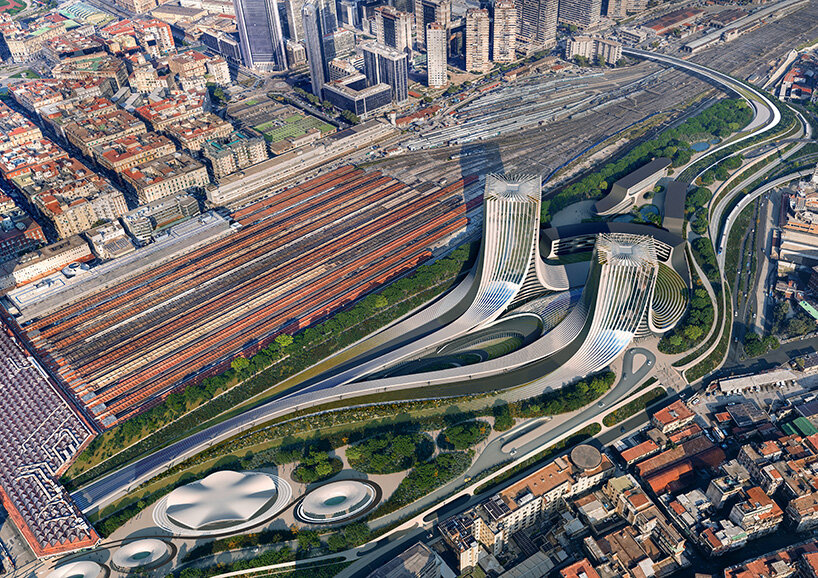
images courtesy of Zaha Hadid Architects
expansive urban park to reconnect naples with nature
The eastern edge of Naples has long suffered from physical and psychological barriers stemming from its abandoned railway yards and disused industrial sites. This area suffers from a lack of integration in its urban fabric, resulting in detachment from the rest of the city. Isolated and considered unsafe, the inadequate public spaces of the district, as well as its physical and psychological barriers, hinder mobility and social interaction. The site, a former maintenance railyard on the eastern edge of Naples and its industrial zone, was abandoned and derelict for decades. Through the architects’ team vision, it is undergoing one of Europe’s largest urban regeneration projects, spanning 15 hectares—comparable in scale to London’s King’s Cross development—set to be reintegrated into the city.
Also central to the Napoli Porta Est masterplan is to multiply green spaces that reconnect the city with nature. ZHA, in collaboration with Martha Schwartz, turns over 10 hectares into an expansive urban park featuring native trees and biodiverse landscapes. The plan prioritizes pedestrian-friendly environments, with shaded walkways and plazas extending from Porta Nolana to the new park and transport hubs.
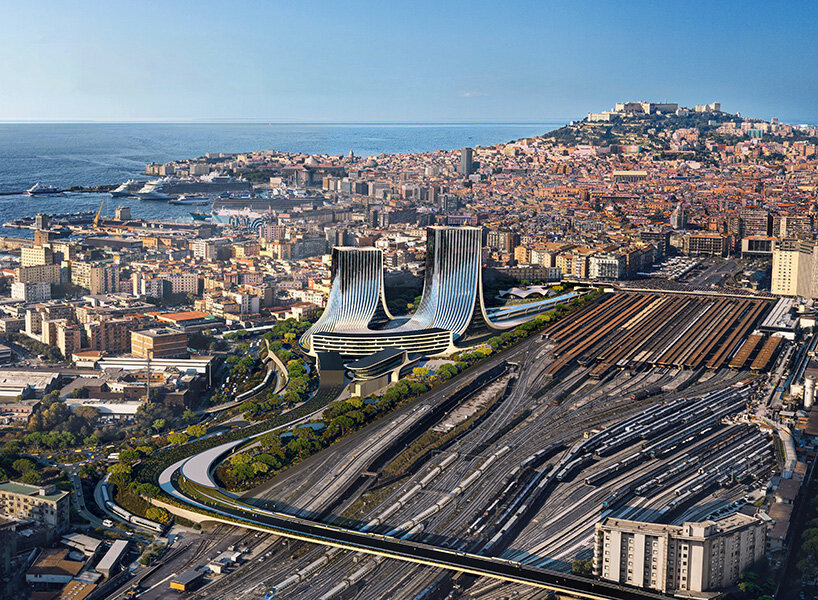
reconnecting the city’s fragmented urban fabric is the primary objective of the masterplan
enhancing accessibility and walkabilitY of the city
The masterplan reclaims over 30 hectares of derelict land, including the former Manifattura Tabacchi factory and other neglected buildings in the Feltrinelli industrial zone, to create vibrant civic spaces. Additionally, the winning proposal sets the foundation for future redevelopment, aiming for the transformation of over 100 hectares of obsolete industrial land, such as the Q8 oil depot, into a new city quarter rich in public amenities.
A key aspect of the masterplan is resolving the severe traffic congestion that the area’s residents face daily. By redesigning one of Naples’ primary interchanges, which serves as a gateway to the national transport network, the project facilitates multi-modal connectivity between the Centro Direzionale, Napoli Centrale Station, and the surrounding districts. The addition of a new regional rail station and pedestrian infrastructure, including an elevated walkway linking to the Centro Direzionale, further enhances accessibility and walkability.
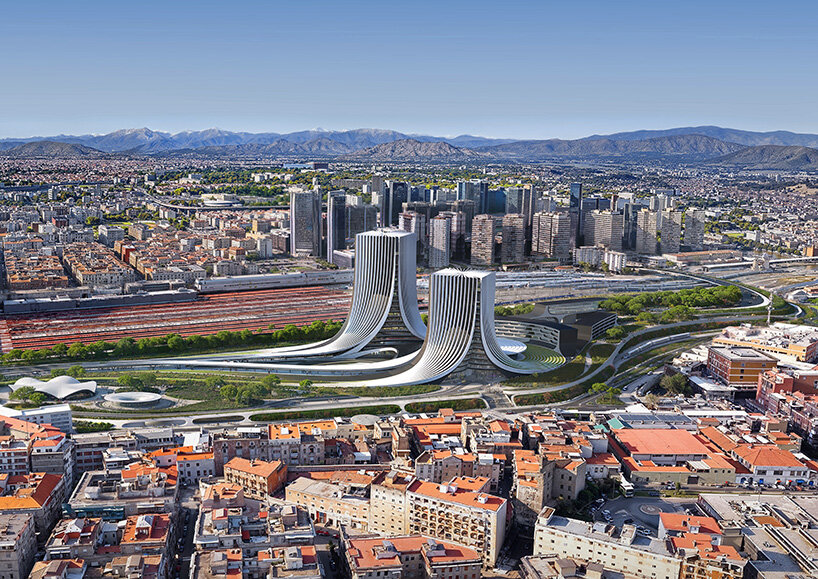
the site was abandoned and derelict for decades
introducing photovoltaic and recycled water system strategies
The masterplan embraces cutting-edge climate resilience strategies, reinforcing Naples’ commitment to sustainable urban development. A pedestrianized neighborhood concept fosters local connectivity, reducing car dependency. The public spaces integrate ‘sponge city’ principles, absorbing stormwater to mitigate flooding and urban heat island effects. A 7,000 square meter photovoltaic system powers essential infrastructure, while recycled water systems decrease potable water consumption by 60%. Geothermal energy supplements heating and cooling needs, aligning the project with LEED Platinum and Class A NZEB standards.

the new Campania Region Headquarters is a defining architectural element within the masterplan
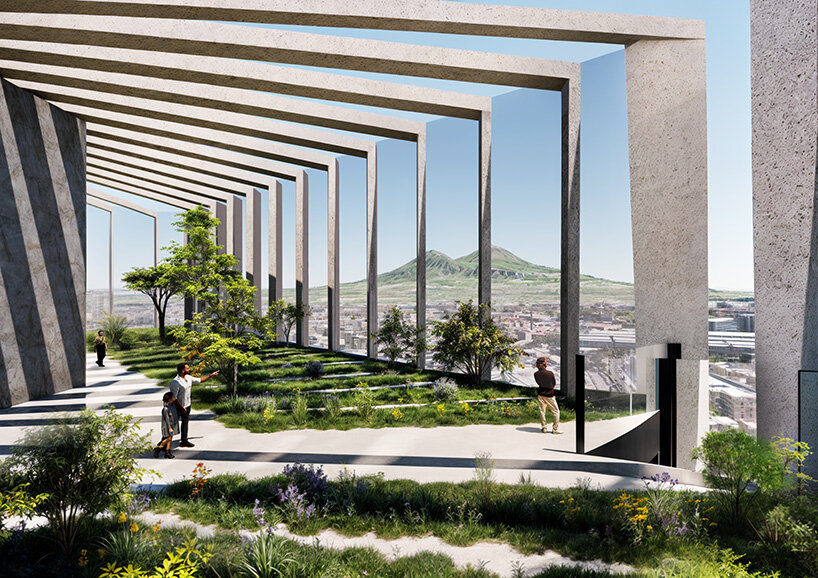
north-facing openings enhance daylighting without excessive glare
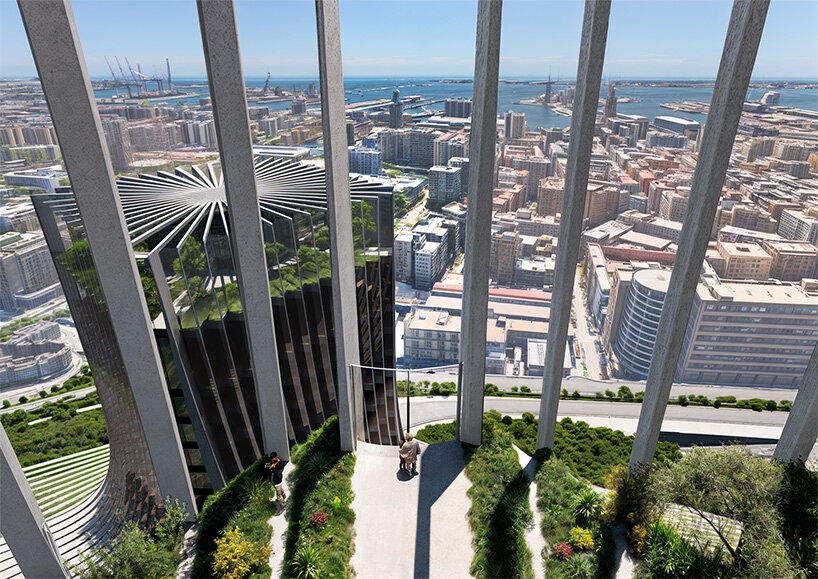
green roofs, and a hybrid concrete–steel construction system allow the project to meet its sustainability goals
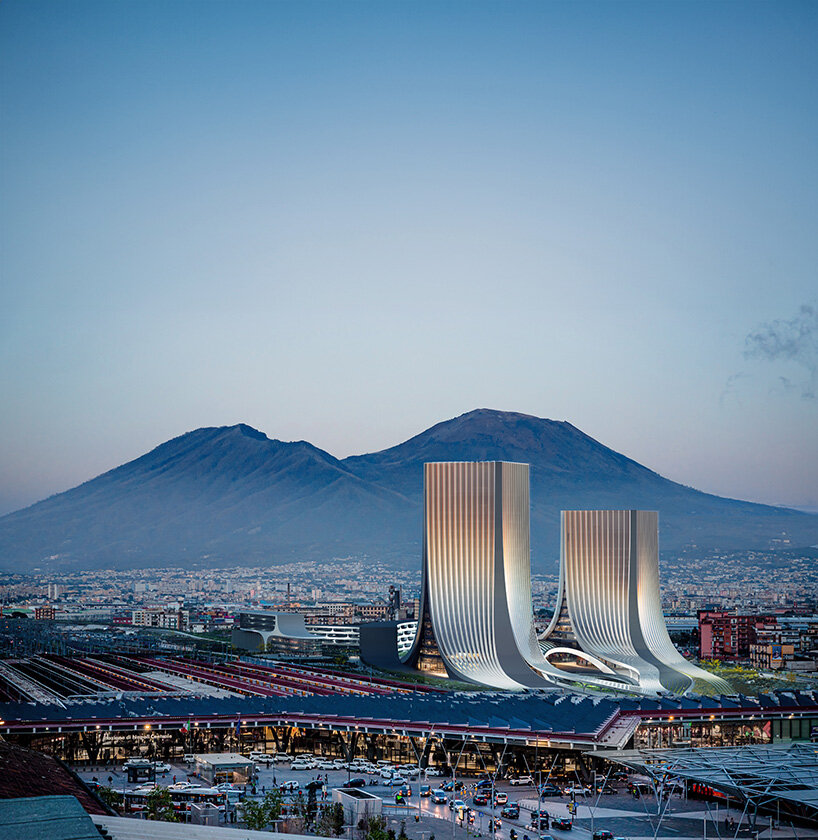
the towers balance high energy performance with bioclimatic strategies
project info:
name: Napoli Porta Est Masterplan
architect: Zaha Hadid Architects | @zahahadidarchitects
location: Naples, Italy
masterplanning: Zaha Hadid Architects
responsible director: Michele Pasca di Magliano
director (rail & TOD): Filippo Innocenti
design director: Maria Tsironi
project associates: Andrea Balducci Caste, Cristina Barrios Cabrera, Domenico Di Francesco, Torsten Broeder, Vincenzo Barilari
design team: Bechara Malkoun, Cemre Demirci, Cherry Lee, Ghanem Younes, Hanadi Izzuddin, Haoyue Zhang, HyunJin Kim, Irfan Bhakrani, Martina Rosati, Olivia Dolan, Sera Su Abac, Yaseen Bhatti, Jing Xu
workplace analytics: Uli Blum, Lorena Espaillat Bencosme, Danial Haziq Hamdan, Christoph Geiger
sustainability: Abhilash Menon, Aditya Ambare, Bahaa Alnassrallah, Disha Shett
acquisitions: Marcella Fedele
local architect: Barracco Smith
structural and civil engineering: Interpogetti SRL
M&E engineering: Macchiaroli & Partners
landscape design: Martha Schwartz Partners
artist and lighting design: Jason Bruges Studio
cost consultant: BC Consulting
traffic and urban mobility: MiC-HUB
safety in construction: Gianni Artuso
archeologo: Viviana Mancusi
economista: Prof. Massimo Marrelli



